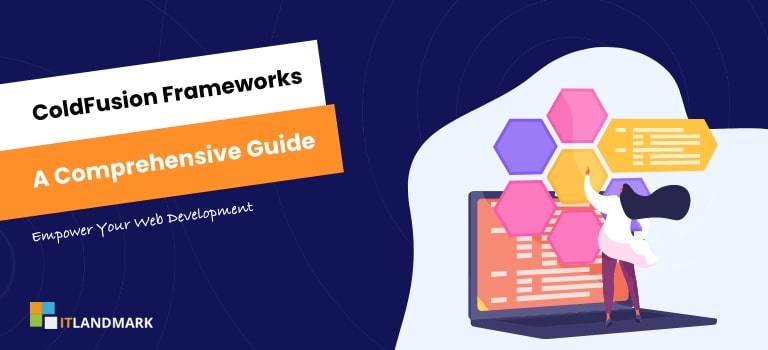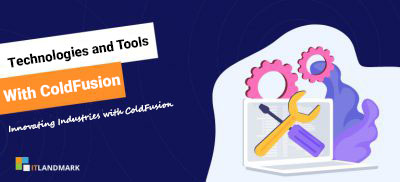
Are you looking to explore the possibilities of ColdFusion for your business? If so, then you have come to the right place. This comprehensive guide will show you the various frameworks available and how they can help streamline your development process. ColdFusion is a powerful programming language that allows developers to quickly create robust web applications. With its object-oriented architecture, it offers great scalability and performance.
However, there are many different frameworks out there that offer different solutions for various types of projects. In this guide, we will explore some of the most popular ColdFusion frameworks such as Fusebox, Mach-II, ColdBox, Model-Glue, and WebORB for Java. We will discuss their features and advantages so you can make an informed decision about which one best fits your project needs. By understanding each framework’s strengths and weaknesses, you will be able to create a successful application with confidence. So get ready to dive into this comprehensive guide and learn all about what these amazing frameworks have to offer!
What is ColdFusion Application Frameworks
Application Frameworks provide a structure to quickly develop dynamic web applications with ease.
ColdFusion is an application development language that has its own set of frameworks, allowing developers to rapidly create effective and robust websites. When using the right framework for your project needs, it can help speed up the development process while providing enhanced features such as unit testing benefits, database connectivity and security considerations.
One of the main advantages of using a ColdFusion Framework is that they are designed in a way that allows you to easily implement various application development strategies. They also have built-in tools to make sure all code follows best practices so there are no unexpected issues or bugs during production.
The extensive libraries included in these frameworks allow you to access hundreds of functions which saves time on writing custom code from scratch.
Why Use a ColdFusion Framework?
Utilizing a framework in ColdFusion can bring numerous advantages, making it a worthwhile consideration for any project. There are both pros and cons to using this type of development platform, so it is important to understand the strengths and weaknesses before making your decision.
By weighing the cost/value ratio of each solution carefully, you will be able to make an informed choice that suits your needs.
One of the major benefits of utilizing a ColdFusion framework is its ability to save time and money by streamlining common tasks associated with web development projects such as coding, testing, debugging, deployment and maintenance. Additionally, frameworks often come with built-in features like database integration, template engines or authentication systems which makes them much easier to use than starting from scratch. This allows developers to focus their energies on more complex problems rather than having to re-implement basic solutions over and over again.
At the same time however there can also be drawbacks when working within these structures. It takes experience and knowledge to properly utilize all available tools within a given framework and some may find themselves limited if they cannot get up to speed quickly enough. Furthermore, while the initial set up costs may be lower due to saved labour hours; ongoing support fees or additional license fees could potentially end up costing more in the long run depending on usage requirements.
By taking into account both the Pros/Cons Advantages/Disadvantages Strengths/Weaknesses Benefits/Drawbacks Cost/Value associated with ColdFusion Frameworks, users can ensure that they select the best option for their specific situation. While there are many different options available, Fusebox has shown itself to be one of most popular choices amongst developers who need powerful results without sacrificing efficiency or ease-of-use.
Also Read: ColdFusion Hosting Service Providers
Top 6 ColdFusion Frameworks
1. Fusebox
You can get powerful results quickly and easily with Fusebox, making it a great choice for your development project. There are many benefits to using this popular ColdFusion framework, including its flexibility and scalability. For developers who want to leverage the power of object-oriented programming in their applications without the overhead or complexity associated with other frameworks, Fusebox is an excellent choice.
When it comes to features, Fusebox has plenty to offer. It includes easy integration capabilities, support for multiple languages (including CFML), caching functionality which reduces page load times significantly, and a robust plugin system that allows developers to extend existing components without having to write code from scratch. Additionally, developers have access to numerous online resources such as forums and tutorials where they can ask questions or learn more about how Fusebox works.
While there are many advantages of using Fusebox for web application development, there are also some limitations that you should be aware of before getting started. These include limited documentation and difficulty debugging complex projects due to the lack of built-in error handling tools. Additionally, since the framework is open source software it may not always be compatible with certain proprietary technologies like databases or content management systems.
Despite these drawbacks, however, many experienced developers still prefer Fusebox over alternative solutions when building modern web applications. With its range of features and comprehensive online resources available today, it’s easy to see why this framework remains one of the most popular choices among ColdFusion developers worldwide.
2. Mach-II
Mach-II is a great choice for developers looking to simplify their web development process, allowing you to “cut to the chase” and get your project up and running quickly.
This framework utilizes the Model-View-Controller pattern (MVC) which provides structure as well as an efficient way of separating business logic from presentation logic.
It also offers ORM support so that data can be accessed in a secure manner while providing caching strategies for optimal performance.
Additionally, Mach-II comes with built-in security features like URL validation and debugging tools such as stack dumps and request profiling.
All these features make it possible to identify and remedy potential issues quickly without sacrificing code quality or performance.
With its robust feature set combined with ease of use, Mach-II has become one of the most popular ColdFusion frameworks available today, making it a great choice for those who are looking for innovation in their web development workflow.
The next step in our comprehensive guide takes us to ColdBox – another popular ColdFusion framework that allows developers to create applications faster than ever before through its powerful conventions over configuration approach.
3. ColdBox
Experience unprecedented speed and power in your web development, with ColdBox’s conventions over configuration approach making it easier than ever to create applications. Leveraging the Model-View-Controller (MVC) Pattern, ColdBox offers developers a powerful set of modules for Dependency Injection, Logging Strategies, View Engines and Event Handling. As a result, you can develop high performance applications quickly and easily while still maintaining scalability and flexibility at its core.
ColdBox has been designed to make coding quicker and more efficient by taking full advantage of object oriented design principles. By leveraging modern programming paradigms such as Dependency Injection, developers are able to minimize code duplication and maximize code reuse which leads to greater productivity. It also supports popular view engines like CFML scripting language so that developers have multiple options when creating their interface layer.
Lastly, its powerful event handling system allows for quick creation of events that trigger functions within an application without having to write complex logic or spaghetti code.
Overall, ColdBox encourages users to develop faster by focusing on the structure of the application rather than individual pieces of functionality. With its emphasis on rapid application development through easy integration of existing libraries and frameworks, Coldbox is changing how we think about web development today – giving us more time focus on innovation rather than mundane tasks.
4. Model-Glue
Model-Glue is a powerful MVC framework that can help you build efficient applications quickly, all while allowing you to remain in control of the code. It follows the Model-View-Controller (MVC) pattern which allows for easier code reuse and helps with database interaction and security management. Additionally, it provides data validation capabilities so that developers don’t have to worry about writing those features themselves.
Model-Glue offers an easy way to develop robust applications without sacrificing control over their codebase. The flexibility offered by Model-Glue means developers are able to tailor application development according to their specific needs. Furthermore, its object oriented nature makes it possible for developers to create custom components or extend existing ones in order to maximize the benefits they get from using this framework.
This means teams will be able to leverage the power of Model-Glue’s core functions while also being able to customize parts of their application where necessary. Overall, Model-Glue provides a great deal of functionality out of the box along with offering plenty of room for customization when needed. With its comprehensive feature set and well designed architecture, it’s no wonder why many developers choose this framework as part of their web development stack.
Moving forward, WebORB for Java should be considered as another tool in your arsenal for building high performance web applications.
5. FW/1 (Framework One)
ColdFusion FW/1 (Framework One) is a lightweight, convention-over-configuration framework for developing ColdFusion web applications. It follows the MVC (Model-View-Controller) architectural pattern and provides a structured approach to building scalable and maintainable web applications.
It promotes simplicity by providing a minimalistic approach to web development. It focuses on essential features and avoids unnecessary complexities, allowing developers to focus on building functionality rather than spending time on framework-specific configurations. It’s modular approach to application development, allowing developers to break their code into smaller, reusable components.
Overall, ColdFusion FW/1 is a powerful and versatile framework for building ColdFusion web applications. Its simplicity, convention-over-configuration approach, modularity, and flexibility make it a popular choice among developers looking for an efficient and scalable framework for their ColdFusion projects.
6. WebORB for Java
If you’re looking for a comprehensive tool to help build high performance web applications, WebORB for Java is an excellent option! With its ORB (Object Request Broker) architecture and simple integration with the ColdFusion framework, WebORB provides developers with the necessary tools to create cutting-edge websites.
The advantages of using WebORB are numerous; let’s explore some of them below. One important advantage of using WebORB is that it can quickly solve coding challenges associated with complex projects. By leveraging the power of ORBs, developers can easily access resources on remote servers without having to write additional code or endure tedious manual processes. This significantly reduces development time and makes creating robust applications much easier.
In addition to solving coding challenges, ORB technology also offers other benefits such as improved performance and enhanced security measures. Since WebORB utilizes this technology, users benefit from faster loading times and increased reliability when dealing with large amounts of data in their application. Furthermore, since ORBs are designed for secure communication between systems, businesses don’t need to worry about sensitive information being compromised during transmission over the internet.
Lastly, integrating Java into your ColdFusion project has never been simpler thanks to WebORB’s easy-to-use API – making it even more attractive for developers who want a powerful solution for their website design needs. All in all, if you’re looking for a framework that helps you develop fast and secure web applications while overcoming any coding challenge along the way then look no further than WebORB for Java! Its plethora of features and seamless integration make it ideal for anyone who wants to take full advantage of modern technologies within their ColdFusion projects.
At LandmarkIT, we specialize in leveraging ColdFusion to build powerful and secure applications across diverse industries. ColdFusion frameworks will work very well to develop any kind of website, making it an ideal choice for businesses of all sizes and industries:
ColdFusion for eCommerce
Streamlined development of dynamic, feature-rich online stores, including inventory management, payment integration, and personalized user experiences.
ColdFusion for Healthcare
Secure and HIPAA-compliant applications for patient management, telehealth solutions, and healthcare data analytics.
ColdFusion for Financial Services
Scalable and reliable solutions for transaction processing, risk management, and financial reporting with top-notch security.
ColdFusion for Government Solutions
Custom web applications designed for public service portals, case management, and data-driven decision-making with strict adherence to compliance standards.
Frequently Asked Questions
What type of applications can be built with ColdFusion?
If you are looking for a powerful framework to build robust applications quickly and efficiently, then ColdFusion is the perfect choice. With its flexibility, cloud-based capabilities, strong documentation support, high performance rate and ability to facilitate teamwork among developers, there is no limit to what kind of applications can be built with ColdFusion. It’s ideal for creating modern solutions that satisfy both business needs and customer desires; an innovation your audience will subconsciously crave!
What is the cost of using a ColdFusion Framework?
You want to build a powerful and secure web application, but you’re not sure how much it will cost? ColdFusion Frameworks are great solutions when it comes to software licensing, community support, learning curve, performance optimization and security compliance. With these frameworks, you can be assured that your investment in development time is backed up by the expertise of experienced professionals who have an eye for innovation. Plus, their knowledge base on topics such as coding and debugging make them ideal for any project size or budget. Furthermore, with the help of tutorials and online resources, you can quickly learn all the ins-and-outs of what makes ColdFusion Frameworks so dependable and efficient.
What is the best way to learn to use a ColdFusion Framework?
Are you looking for the best way to learn ColdFusion Frameworks? If so, there are a few essential steps and resources that will help. First, it’s important to make sure you have an understanding of programming basics. After that, learning about database connectivity is key. You’ll also want to take advantage of online resources such as tutorials and videos which can provide helpful guidance. Additionally, look into documentation resources for more in-depth information on the subject. With these steps combined, you’ll be well on your way towards mastering ColdFusion Frameworks!
How secure is a ColdFusion Framework?
You might be wondering how secure a ColdFusion Framework is. Generally, they are very secure as long as you keep up with version updates and address any security vulnerabilities quickly. Data protection is also important to ensure your information stays safe. Performance benchmarks can help you evaluate the functionality of the framework while documentation resources provide helpful guidance for implementation and use. With all these safeguards in place, ColdFusion Frameworks offer an effective and reliable way to create web applications that are secure and innovative!
What are the pros and cons of using a ColdFusion Framework compared to other frameworks?
If you’re looking to develop a project quickly, ColdFusion may be the perfect framework for you. With its rapid development capabilities and ease of use, it’s no surprise that many developers are turning to this technology. The quality of the documentation is also outstanding, making it easy to learn how to use the platform. Additionally, there are plenty of support options available if you run into any issues while using ColdFusion. From deployment strategies to scalability, your project can benefit from leveraging this powerful tool in more ways than one.
Conclusion
Imagine you’ve been climbing a mountain for days. You’re exhausted and ready to give up, but then you see the peak just ahead of you. That is what it feels like when you find the perfect ColdFusion framework for your project – an immense sense of relief and accomplishment!
With so many frameworks available, it can seem overwhelming at first. But with the right research and guidance, finding the best framework for your needs isn’t impossible.
ITLandmark has extensive hands-on experience with all ColdFusion frameworks. If you have any requirements or need assistance, feel free to contact us.



